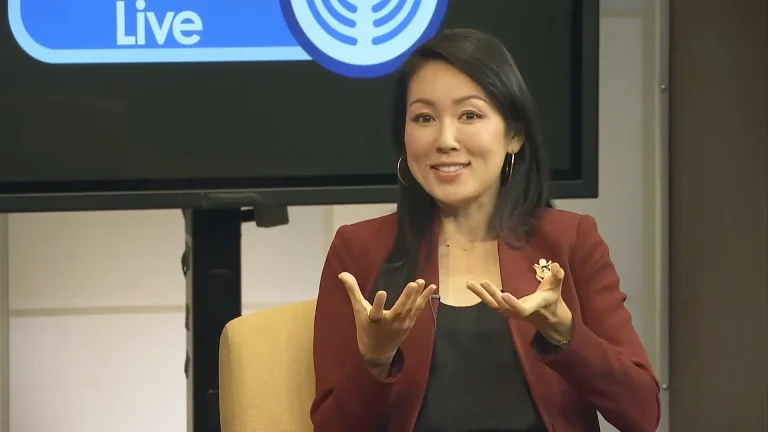Do You Have the Newsroom You Need?
Use our checklist to gear up for what promises to be a turbulent ’24.
First of two parts. Part 2.
It promises to be a crazy year for communicators.
I know. We say that every year. But 2024 might make the last few years look like a lazy Sunday afternoon by comparison.
Inside organizations, there’s more churn and burn than ever: the continuing challenge of communicating with on-site versus remote employees; improving engagement to retain and recruit talent; and building a better, more inclusive culture. Some internal communicators, battle tested by COVID just a few years ago, have fallen back into old habits, exhausted by the need to do even more with less.
Externally, public relations pros and marketers face one of the most volatile political years in recent memory, an uncertain economy, and the global effects of war and a fragile environment. Communicators must strike the right balance between the organization’s business interests and the expectation that it will act as a good citizen on important social issues.
Hovering over all of this is the promise (and threat) of artificial intelligence. Will it make us better storytellers for our companies or take us to an acceptable level of generic mediocrity? (That’s a story for another day.)
Is your team ready for this? Use our starter kit to build the newsroom you deserve — or improve the one you’ve got.
And just to be clear: We use “newsroom” to describe the group of people (like you) who are responsible for creating and disseminating news and information on behalf of your organization. There’s a lot to say on this subject, so we’ll do it in two parts:
Part 1: Building your newsroom: Assessing your content and channels; creating a newsroom organization chart
Part 2: Running your newsroom: Story creation, source development and managing approvals
Part 1: Building your newsroom. Most communicators operate in a department that has seen few structural changes over the years, other than what box they fall under on the org chart. (This year, comms seems to report to marketing. Last year, it was HR.)
- Assess your content and channels. Your first step to building a better newsroom is to assess what you’re doing right, what isn’t working and what you should fix or eliminate.
Comms channel checklist
Channels get added but are rarely eliminated. How many do you have, including the human channels of manager and leadership communications? Make a list. You might be surprised (or not) by how many have accumulated.
- How are they performing? In a comms survey (or a pulse poll), ask your internal audience to name their top three “go-to” channels. After performing this exercise, one organization recently found it had 11 channels to rank. All-staff emails were ranked first (84%), followed by all-hands meetings (55%) and Microsoft Teams (49%).
- Perform the same diagnostic on your external channels, such as your website, online newsroom, press releases and, most notably, social media. For both internal and external, you’re looking at the metrics (who’s using the channels and what they’re doing with your content).
Tip: Social media isn’t a throwaway to be populated with frivolous “National Pancake Day” content (unless you’re in the pancake industry). Social posts should be part of your editorial decision-making.
- Next, rate the content you’re putting in those channels on a 1 to 5 scale, with 1 being truly lousy and 5 being fabulous. Here are some of the questions we typically ask:
- Is the writing crisp and bright?
- Are we telling a compelling story?
- Are we writing good headlines, teasers and ledes?
- Are we pushing as well as pulling readers to good content?
- The ultimate question: Are we putting the right content in the right channel at the right time, in a format that connects with the audience?
- Create a grid with the channels you want to keep, listing the proper frequency for each and what kind of content they should deliver. What channels can you eliminate, change or consolidate with other channels? This will become part of your editorial standards.
TIP: Think in terms of daily, weekly, monthly and quarterly content. What content is timely and need-to-know (daily and weekly)? What provides context and understanding, and could appear monthly or quarterly?
TIP: Don’t eliminate a channel just because it isn’t getting any love. After all, many intranets are quite necessary but tend to underperform. Ask yourself: What does this channel need to draw a crowd? What can I add to make this a worthy destination? Can I push people there instead of hoping they’ll come on their own?
- Build your editorial structure. Whether you have five communicators or 50, you want a newsroom that makes it easy to plan, assign, track, publish and measure the content you produce. That starts with putting the right people in the right roles:
Newsroom staff checklist
- Executive editor, aka editor or editor in chief. Someone needs to be in charge and have the final say on content before it goes out the door. Top editors have the ear of their leaders, who trust them to make the right call and to give them unvarnished advice on how to best position content, promote thought leadership or deal with a crisis. (Note: In a fully integrated newsroom, the executive editor presides over both internal and external content.)
- Managing editor(s). Ideally, there would be two: one to manage internal needs and content, and the other working the external side of the street. Or you might have one managing editor who oversees senior editors of internal comms, PR and marketing. Managing editors keep the trains running on time, moving copy through the system and managing the editorial process, from story assignment to problem solving, approvals and delivery.
- Writers. Duh. But you’d be surprised (or maybe not) by how many newsrooms we encounter that have a dozen or more communicators but perhaps only one actual writer. Everyone else is fielding the never-ending requests from the departments, from the absurd to the urgent, writing communication plans but not stories, and dealing with their “clients” — the various departments that have content needs, from C-suite leadership messages to IT announcements.
- Other content producers: videographers, photographers, graphic artists, etc. These aren’t luxuries anymore. Visual storytelling is more important than ever. As a longtime ink-stained wretch, it pains me to speak this truth: You can’t engage your audience with words alone. Images are what make people pay attention, and cheesy clip art doesn’t get it done.
TIP: Don’t get hung up on titles and reporting lines. Adapt the editorial org chart to meet your needs and your personnel. Use it to identify holes for your next hiring or training for your team.
Don’t delay! National Pancake Day is Feb. 13 at IHOP, unless like the rest of the country you celebrate on Sept. 26. Even dumb social media posts can be controversial.
Next week: Part 2: Editorial process, source development and my personal favorite — approvals!
Jim Ylisela is the co-founder of Ragan Consulting Group. He’s crazy about newsrooms and wants to help you improve yours. Do you want to talk to Jim about your newsroom structure and editorial process?
Contact our client team to learn more about how we can help you with your communications. Follow RCG on LinkedIn and subscribe to our weekly newsletter here.







